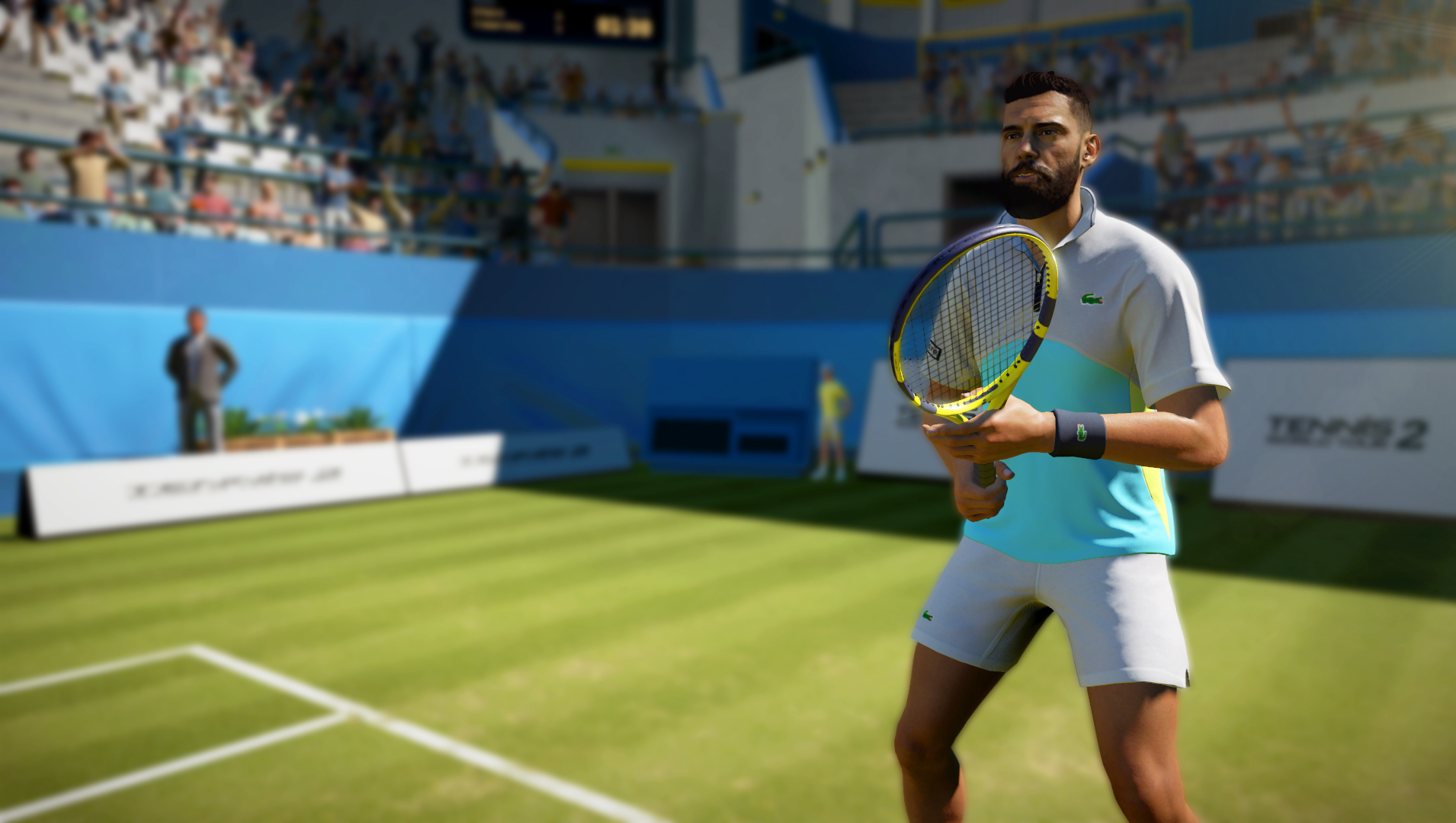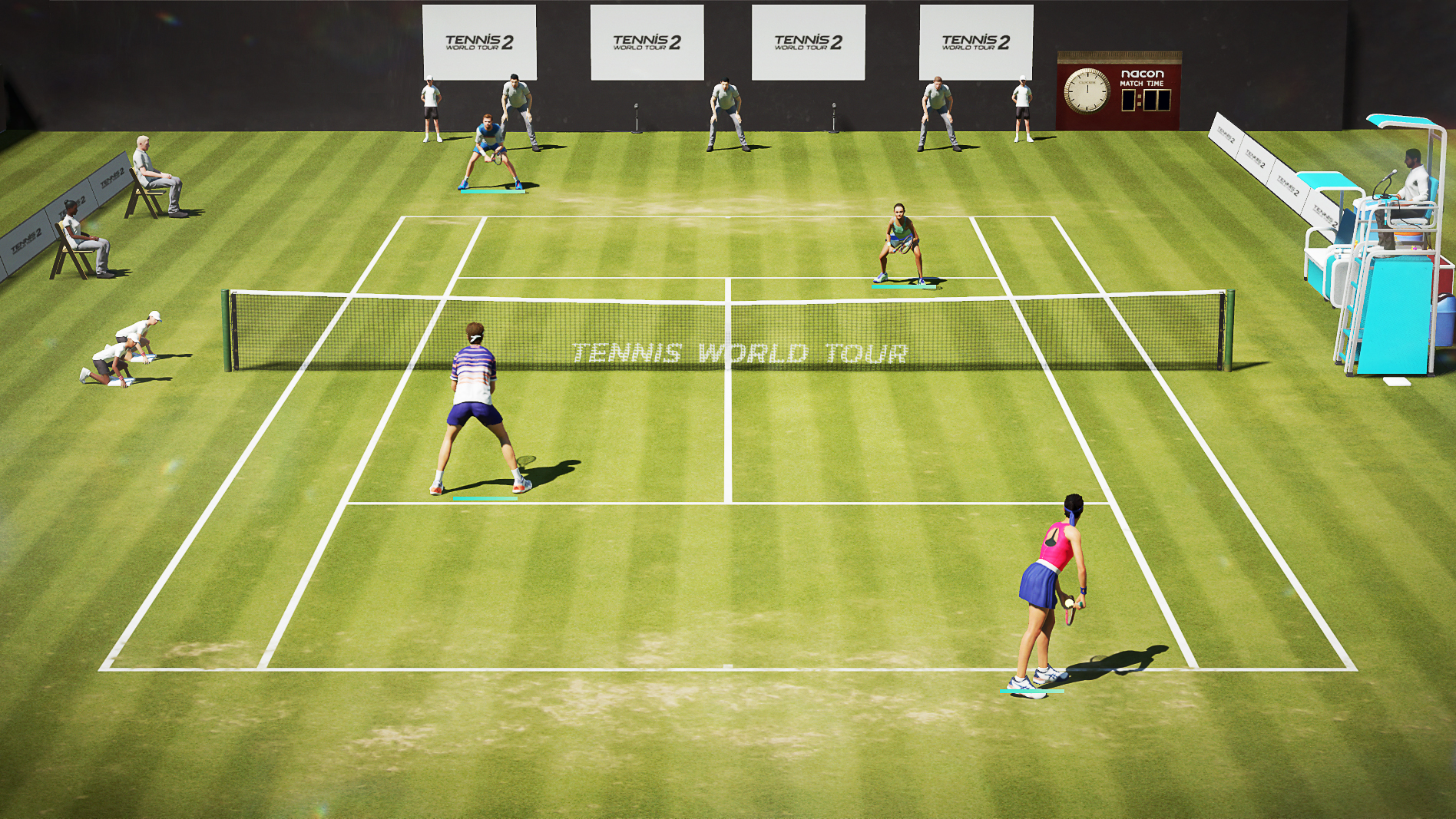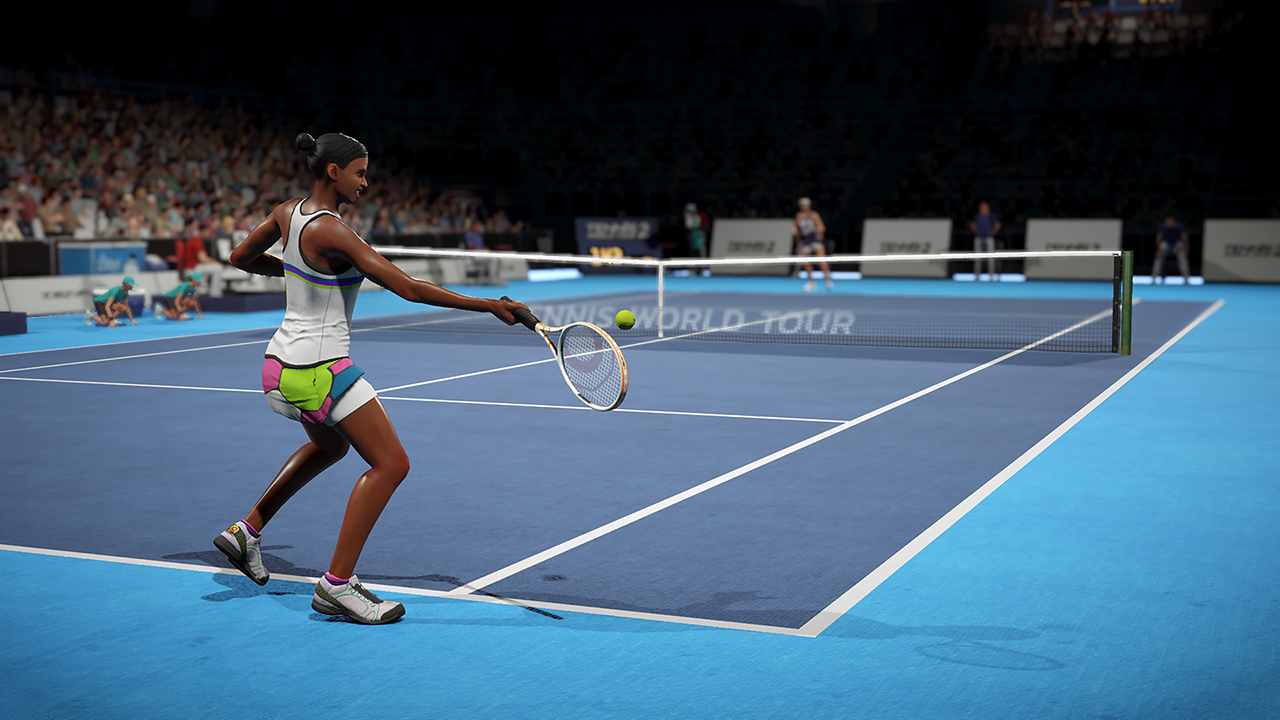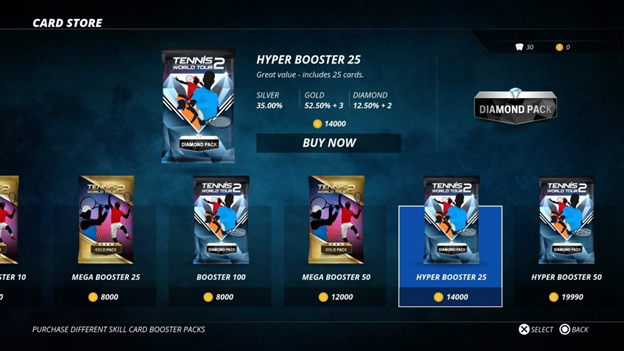Review: Tennis World Tour 2 (Nintendo Switch)
Big Ant Studios brings big tennis to the Switch. And by big, I mean you get to use avatars of big names like Federer, Nadal, and a few dozen others. You also get to make your own avatar so you can join the game (and get beaten badly by the pros). After that, it gets a little less inspiring.
First off, tennis (singles) was the only organized sport I played in school, although I actually saw more action against my crazy Finnish friend (I’m looking at you, Juha Pekka-Kontio). Juha ran me around so much I literally wore the rubber off my soles. I have not played in a while, but I remember the physicality, the mental focus, and the sheer fun of smacking that little green ball around.
Let’s look at some of the things I can appreciate about Tennis World Tour 2. You can play against or play as several of the big names in tennis. If you enjoy learning the myriad controls, subtleties, and nuances of a complex sim type game, you have plenty of opportunity here. There are a few different ways to play, including exhibition (one-off match) or career mode where you can track your progress. You can play either singles or doubles (men’s, women’s or mixed).
As far as hitting the ball goes, you can select different buttons to get topspin, backspin, or hit the ball flat. You get more power behind the shot if you hold the action button longer, and you can use the left Joy-Con to aim. The ZR button lets you run faster, but it burns available stamina.
Tennis World Tour 2 lets you select different venues, court surfaces and weather conditions. As in real life, the court surface and the temperature/humidity play a part in how the game plays; ball speed and bounce, player fatigue, etc., are all affected by these settings. You can also set how easy the game is to play. Warning: At the Very Easy setting, the game all but plays itself and is basically no fun at all.
Since we have broached the level of fun to be had with this game, as a lot of it is less than inspiring. We can start by looking at the flip side of the items we covered above (get ready for a lot of “but…”). Yes, you can play against pro athletes, but they don’t really play with the individual styles of their namesakes. They do have a few mannerisms programmed in, but these start to look a bit worn when they happen frequently and on rotation.
Yes, there are plenty of controls for all aspects of game play, but they are a bit clumsy to use. Using the left Joy-Con to move while simultaneously using the right to aim, ZR to run, and Y for a more powerful hit doesn’t effectively simulate the real experience of using your whole body and mind to “simply do it.” I know there is practice needed for either version, but trying to do four different things with four different fingers is a different thing than moving the body in a coordinated effort.
OK, so moving around is awkward. How about everybody’s favorite game feature, the tutorials? Here is another dose of disappointment. The tutorials should tell you how to use the controls to do the things you need to do to play the game. I started with the lesson on how to hit the ball back over the net. You get a ball launcher for practice, and the coach provides the super helpful lesson “hit the ball.” Great. Thanks, coach. What the game should tell you is that your player doesn’t actually swing until you release the button. Knowing this going into a game makes playing much easier and the coach’s feedback more useful. This functionality is necessary to accommodate the whole power hit function as well as playing into having to really learn how to play the game before you can get good at it. Unfortunately, the whole swing on release thing is counterintuitive for a lot of gamers and really requires some time to get smooth with it. The other tutorials are just as helpful; you’ve been warned.
When it comes to customizing your own avatar, you get a medium range of options to change appearance. The “you” you create (as well as the other players) are a bit plastic looking, and some of the movements look a bit wrong. When the characters are walking, I occasionally catch something that just doesn’t look natural. It’s one of those hard-to-put-your-finger-on things, but I can’t stop seeing it now.
As mentioned above, you can pick the court surface and weather. You also get to choose the venue (Hawaii, Spain, etc.), and this is entirely visual.
When you’re playing, all you care about are the boundary lines, the net, your opponent’s location, and the ball. Everything else like what country you’re in, what language the fans speak, or what the stadium looks like don’t have any bearing on hitting your little green friend. Speaking of the ball, the game really should have done a better job of either maintaining a good contrast or finding a way to highlight the ball’s location. There are too many circumstances where it is a bit difficult to see where the ball actually is. Aiming your shots is equally nondescript. The game displays a small scratch line, but it is too subtle.
The last issue comes in the form of a completely unnecessary card system. You get cards (which are, mercifully, purchased with in-game currency) to use as boosts. The game would be better served with a way to improve your players skill level, speed, endurance, etc. with training and wins. The cards are really out of place in this game.
When I got Tennis World Tour 2, I really wanted to like the game. Although there is plenty to do and a lot to customize, it’s also overly complicated and confusing. I think I’ll find another way to get my tennis fix.
The post Review: Tennis World Tour 2 (Nintendo Switch) appeared first on Pure Nintendo.
* This article was originally published here






Comments